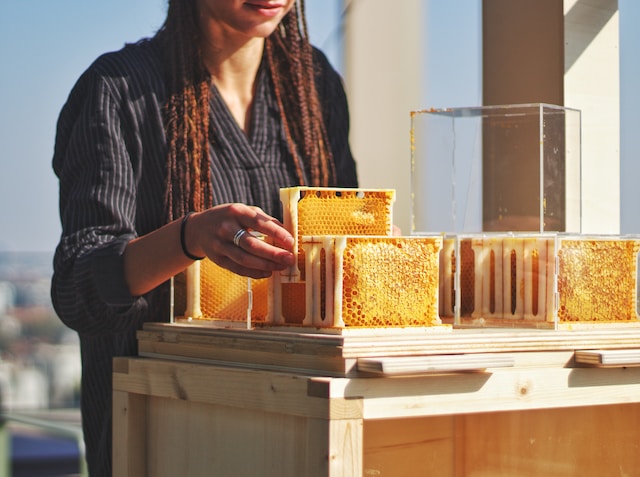The Culinary World of Honey
Honey, often regarded as nature’s sweet nectar, is not just a sweetener; it’s a culinary gem with a world of flavours and a rich history. Beyond the familiar bear-shaped bottles on supermarket shelves, honey enthusiasts and beekeepers have unlocked a diverse spectrum of honey varieties, each with its unique taste and characteristics. In this blog post, we’ll explore the captivating world of honey, its various types and flavours, delve into the art of beekeeping, and share delectable recipes that showcase honey’s versatility as a key ingredient.
The Spectrum of Honey: Types and Flavors
Honey is as diverse as the flowers from which bees gather nectar. Different floral sources, regions, and even seasons contribute to the wide range of honey flavours and aromas. Here are a few notable types of honey:
Wildflower Honey: A delightful mix of nectar from various wildflowers, creating a complex, mildly sweet flavour with floral undertones.
Clover Honey: Clover fields produce light, mild honey with a pleasing, delicate sweetness, making it a popular choice for everyday use.
Lavender Honey: Gathered from lavender blooms, this honey exudes a fragrant, slightly herbal flavour with hints of lavender.
Manuka Honey: Hailing from New Zealand, Manuka honey is known for its robust, earthy taste and potential health benefits.
Acacia Honey: Acacia trees yield a pale, transparent honey with a subtle, fruity aroma and a clean, mild taste.
Buckwheat Honey: Dark and robust, buckwheat honey boasts a rich, molasses-like flavour with hints of earthiness.
The Art of Beekeeping
Beekeeping is not only a source of honey but also a vital practice for pollination and ecosystem health. Here are some key aspects of beekeeping:

Beehive Basics: Beehives are the homes of honeybees. They consist of multiple chambers, including those for brood rearing, honey storage, and pollen storage.
Bee Behavior: Understanding bee behaviour is crucial for successful beekeeping. Bees follow complex social structures and communication methods.
Harvesting Honey: Harvesting honey involves careful extraction and processing to preserve its flavour and quality while ensuring bees have enough for themselves.
Pollination: Honeybees play a critical role in pollinating crops, making them essential for agriculture and food production.
Recipes Celebrating Honey
Now, let’s explore some delicious recipes that showcase honey’s versatility:
Honey-Glazed Carrots: Roast carrots with a honey glaze to create a side dish that balances sweetness with earthy notes.
Honey Mustard Chicken: Marinate chicken in a mixture of honey, mustard, and herbs for a succulent and flavorful main course.
Honey-Lavender Ice Cream: Infuse honey with lavender and use it to sweeten homemade ice cream for a delightful and aromatic dessert.

Baked Brie with Honey and Nuts: Warm, gooey baked brie drizzled with honey and topped with toasted nuts makes for an elegant appetizer.
Conclusion
Honey is more than just a sweet treat; it’s a treasure trove of flavours and a testament to the intricate relationship between bees, flowers, and the environment. Whether you’re drizzling wildflower honey on your morning toast or using it to enhance the flavours of a gourmet dish, honey’s versatility knows no bounds. So, embrace the culinary world of honey, savour its diverse tastes, and appreciate the artistry of beekeeping that brings this golden elixir to our tables.

